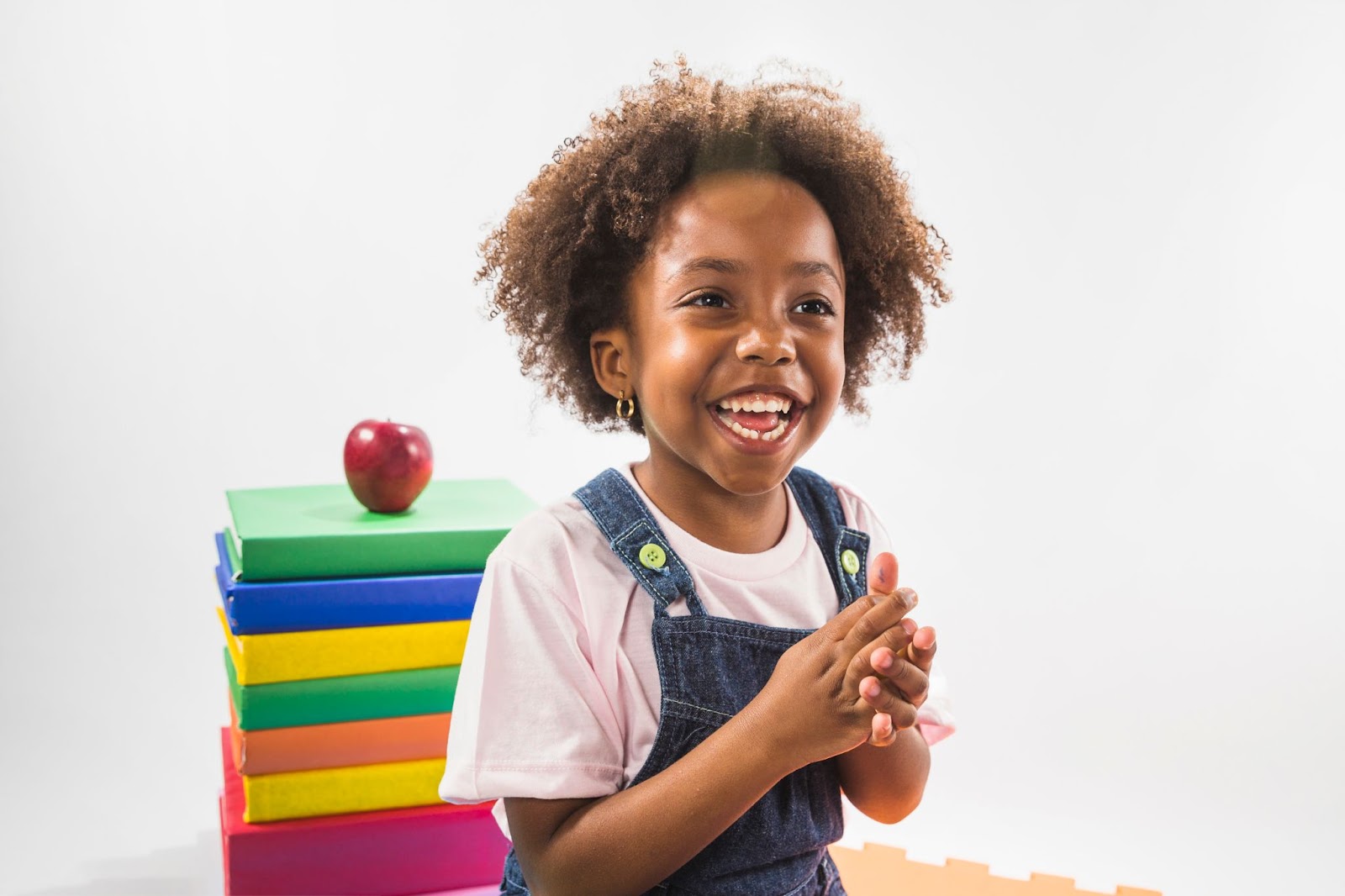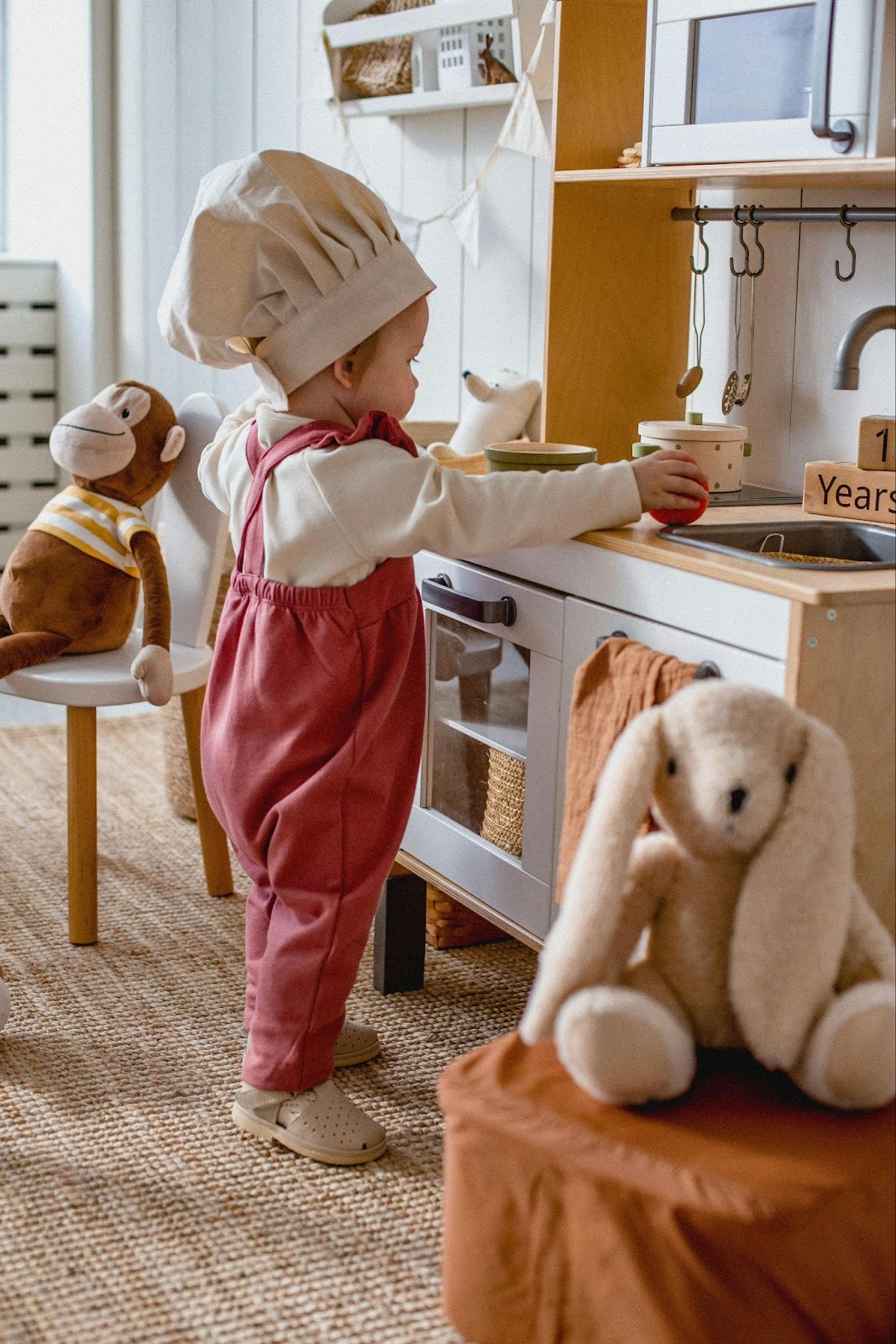It takes work to encourage ASL in kids. Children and caregivers alike must contribute to this effort. To simplify the task, you should teach your child ASL through play. You’ll learn that play, which is one of man’s natural gifts, can significantly improve a child’s learning. It is a great resource for preparing a child’s body, mind, and emotions to learn. Let’s look more closely at how to use play to teach ASL to children.
The Origin of Play as a Learning Method
Research on the importance of play started as early as the 19th century, and according to these researches, playing has been discovered to be a useful tool for mental, social, and biological balance in the lives of children. The earliest signs of play that children show are between ages zero to three months. At this age, they engage in what is called “unoccupied” play, where they make different random movements aimed at nothing in particular. This goes to show that as humans our ability to play is innate.
The Different Stages of Play Children Undergo
Image by brgfx on Freepik
There are different stages of play for different ages of children. Aside from the unoccupied stage of play, the other stages include:
Independent Play:
Children at this stage are often between the ages of two and three years old and feel at ease playing alone with any toys they have at that moment. The young children’s lack of social and communicative abilities is a crucial factor for play in this stage.
Spectator Play:
This entails a child being at ease with merely observing his or her peers or the adults around play, perhaps because he or she is unfamiliar with the rules of the game or simply because he or she wants to learn from what others are doing.
Playing Simultaneously:
Children occasionally decide they wish to play alone despite still being around their playmates and surrounded by their peers and similar toys. At this point, even though the children act as though they are clueless about what their classmates are doing, their play is heavily influenced by them. This stage is also termed the “parallel play.”
Interactional/Associative Play:
At this play stage, children are drawn to play with one another and interact with one another as they work on a particular task while playing. It is also at this stage that friendships begin to grow.
Other stages of play include Cooperative play, Competitive play, Constructive play, Dramatic play, and Physical play.
Types of Playing Techniques
Children’s “playing techniques” refer to the distinct focuses of their different types of play. Some of these techniques are:
Physical Technique:
This playing technique primarily involves physical activity. The child is focused on movement, throwing, jumping, and sprinting. Their bones and muscles are stronger as a result.
Social Technique:
This technique focuses on helping the child play with others. While playing, the child picks up the concepts of sharing and showing compassion for his companions. They are also curious about who their playmates are and what they enjoy and dislike.
Constructive Technique:
This technique’s main objective is to aid children in overcoming their clumsiness. They start to improve their mobility and problem-solving skills as they start experimenting with simple drawings, music, and building blocks.
Fantasy Technique:
When using the fantasy technique, children are urged to play with their imaginations. With the help of this technique, they can imagine themselves in any capacity as humans, animals, or objects they have seen or heard in addition to creating their universe.
How Play Can Be Used to Learn ASL
The greatest way to get the most out of teaching young children ASL is to make sure that most of the teaching methods are combined with enjoyable activities. The goal of doing this is to encourage children to maintain their enthusiasm for studying ASL. Adopting some of the playing strategies already discussed above is therefore strongly advised. Additional learning techniques include:
Utilizing a Play Routine
Children should not be left unsupervised to play alone for extended periods. The goal of having kids learn while they play is defeated if this happens. A play routine can be created for children to learn ASL through play. As you introduce ASL into their play, supervise them.
For instance, during the hour of constructive play, you can assign a child some ASL puzzles to complete before giving them a pleasant ASL storybook to read for the following hour or so. Your capacity to alter the plays at various points for the child grows their understanding of ASL and their interest in sign language altogether.
Utilizing All the Playing Techniques
When you examine the many playing techniques used to support your child’s learning while playing, you’ll see that each has a specific purpose. So it’s best to employ all the playing techniques when teaching your child ASL. For the physical technique, you can have your child hop while they sign, or, if they are playing with others, you can have them play a game of “skip and sign”, with you for example, requiring them to sign something when they lose a turn.
To learn ASL with the fantasy technique, you can have your child develop ASL picture books, invent a fictional universe with their stories, or utilize the charade game technique where they sign their favorite movie characters or favorite passages from literature they are familiar with.
Being a Participant
You will admit that occasionally grownups find children’s play and the joy they take in it contagious. It’s recommended that you actively play with your children as often as you can. Play along with them as they play instead of only giving instructions to help them learn ASL.
For older children, ensure it is not done as frequently as you do with younger ones because your frequent involvement could be perceived as unwanted intrusions. Older children always love their space.
Conclusion
Is it necessary to make ASL learning for children enjoyable? Yes. Learning is more effective for both adults and children when it is enjoyable, and this is what utilizing play while learning seeks to achieve. Play encourages creativity in kids and helps them become more aware of their surroundings and the roles they want to play as they get older. Additionally, it arouses in them pleasant feelings that improve their ability to learn. Play should therefore be utilized to teach children ASL.
With a variety of ASL learning resources from SignBee Academy, you can start teaching your child ASL right away.
Thumbnail Photo Credit to: Image by Freepik





